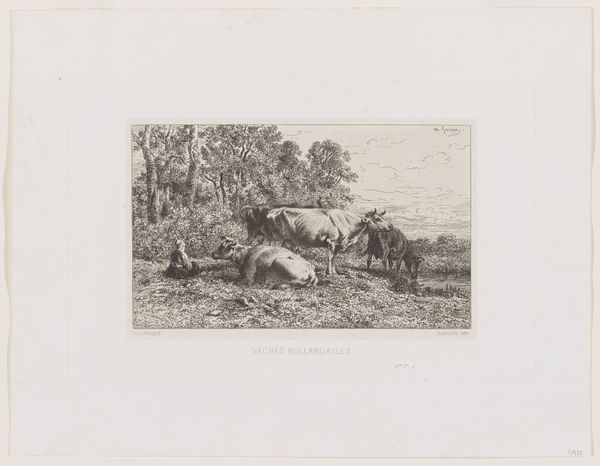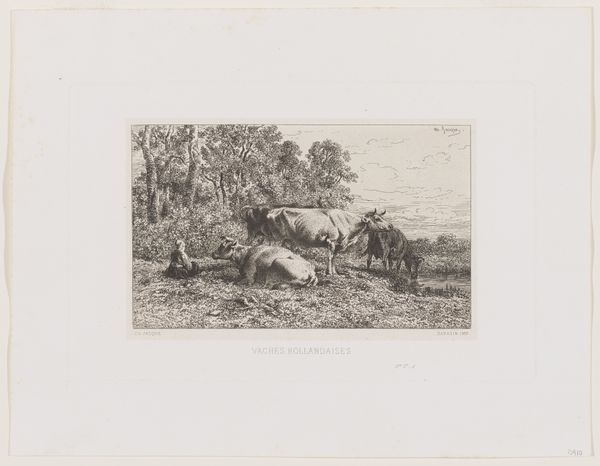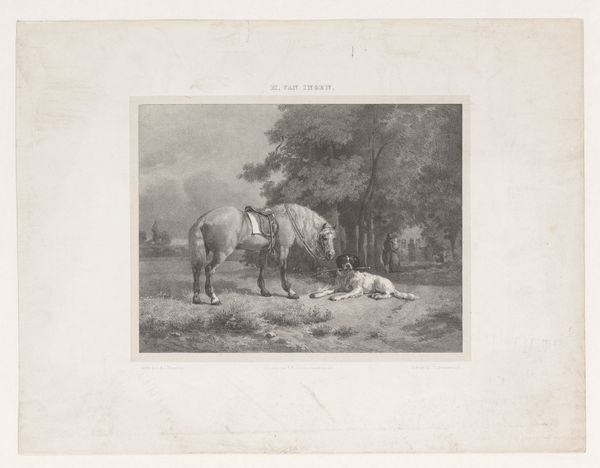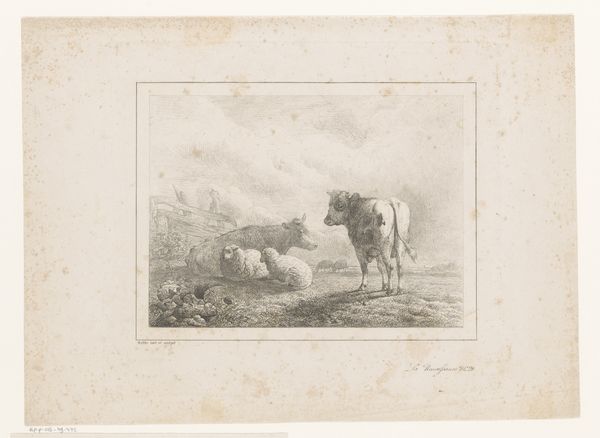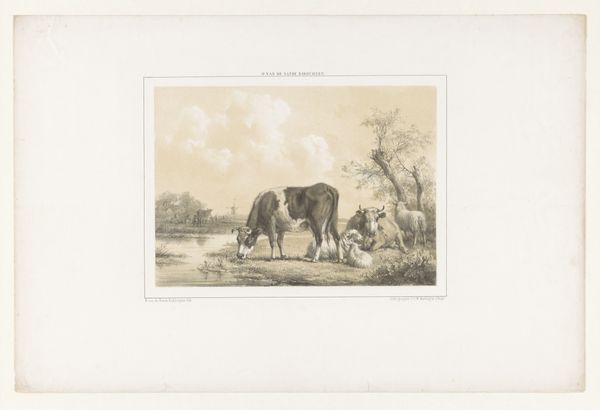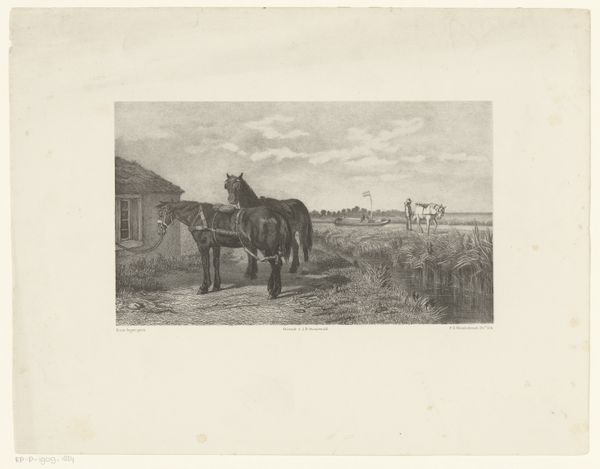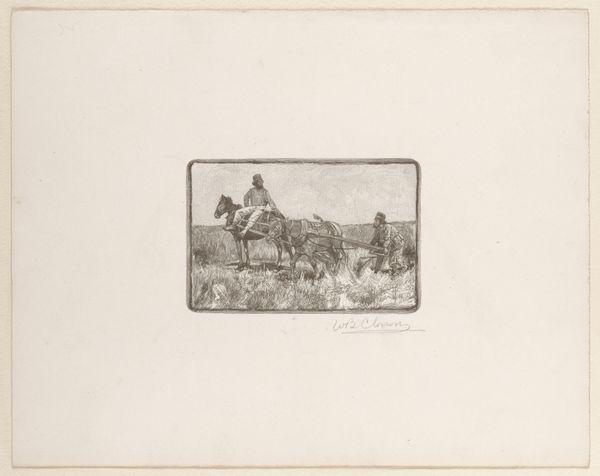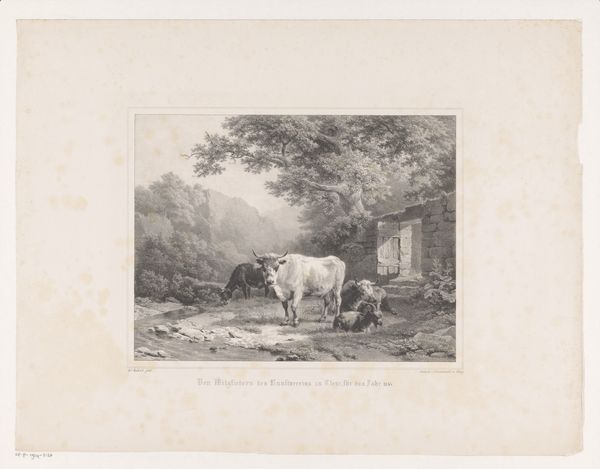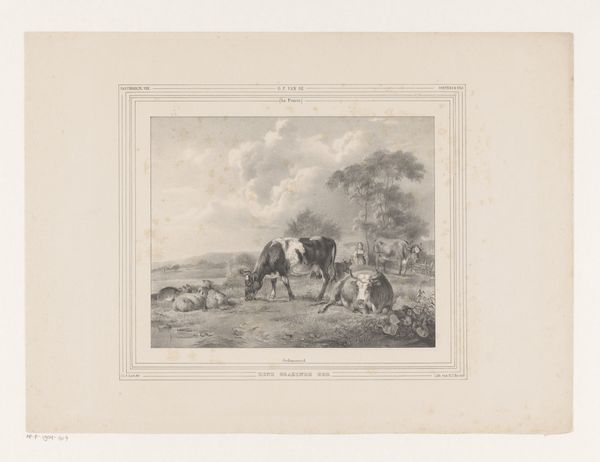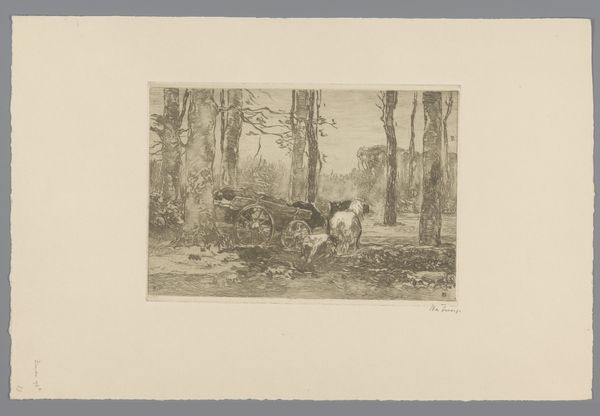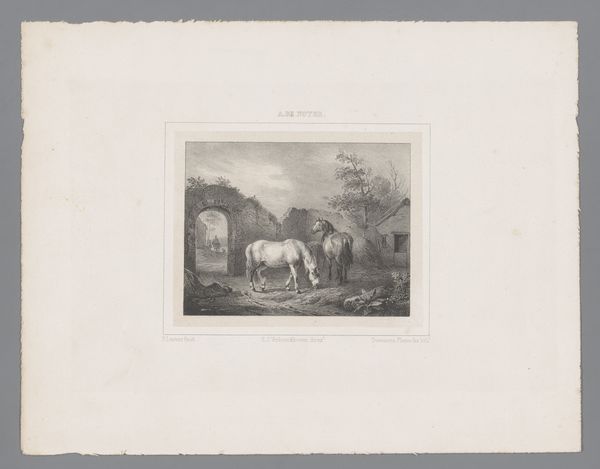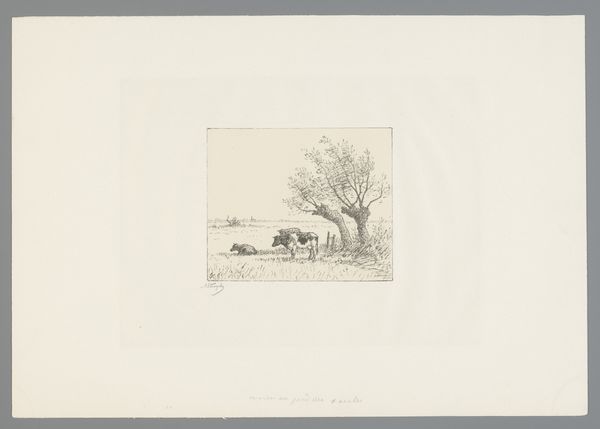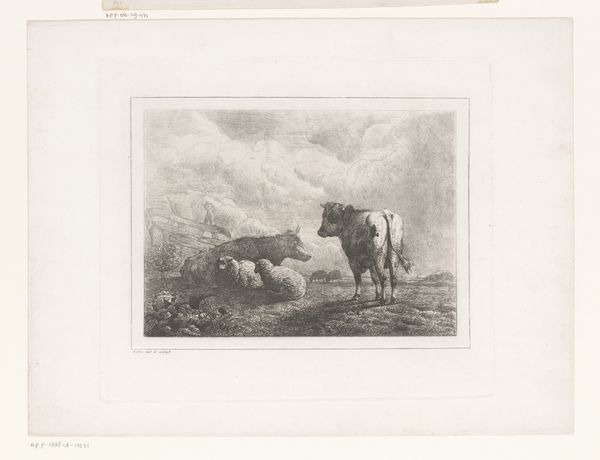
print, etching
# print
#
etching
#
landscape
#
genre-painting
#
realism
Dimensions: 4 1/4 × 7 1/8 in. (10.8 × 18.1 cm) (image)9 7/16 × 12 3/16 in. (23.97 × 30.96 cm) (sheet)
Copyright: Public Domain
Charles-Émile Jacque created this etching entitled ‘Dutch Cows’ sometime in the 19th century. It shows a pastoral scene featuring cows grazing, with a young shepherdess watching over them. As an artist who emerged in the Barbizon school, Jacque aligned himself with the rural naturalism that became popular in France in the mid-1800s. Artists turned away from depicting historical or mythological scenes and focused on representing the everyday lives of peasants and rural landscapes. This shift reflected broader social and political changes, including the rise of republicanism and an increased interest in the lives of ordinary people. Jacque's focus on rural life can be understood as part of a larger cultural movement that sought to celebrate the virtues of country life and the dignity of labor. To more fully understand this artwork, we could consult agricultural records and political pamphlets that illustrate the debates about the value of rural life. In the end, art is always embedded in a specific social and institutional context.
Comments
No comments
Be the first to comment and join the conversation on the ultimate creative platform.
